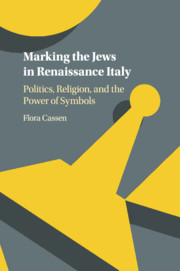Book contents
- Marking the Jews in Renaissance Italy
- Marking the Jews in Renaissance Italy
- Copyright page
- Contents
- Figures
- Acknowledgments
- Introduction
- 1 Origins and Symbolic Meaning of the Jewish Badge
- 2 Dukes, Friars, and Jews in Fifteenth-Century Milan
- 3 Strangers at Home
- 4 From Black to Yellow
- 5 No Jews in Genoa
- Conclusion
- Bibliography
- Index
- References
Bibliography
Published online by Cambridge University Press: 27 July 2017
- Marking the Jews in Renaissance Italy
- Marking the Jews in Renaissance Italy
- Copyright page
- Contents
- Figures
- Acknowledgments
- Introduction
- 1 Origins and Symbolic Meaning of the Jewish Badge
- 2 Dukes, Friars, and Jews in Fifteenth-Century Milan
- 3 Strangers at Home
- 4 From Black to Yellow
- 5 No Jews in Genoa
- Conclusion
- Bibliography
- Index
- References
- Type
- Chapter
- Information
- Marking the Jews in Renaissance ItalyPolitics, Religion, and the Power of Symbols, pp. 199 - 219Publisher: Cambridge University PressPrint publication year: 2017



